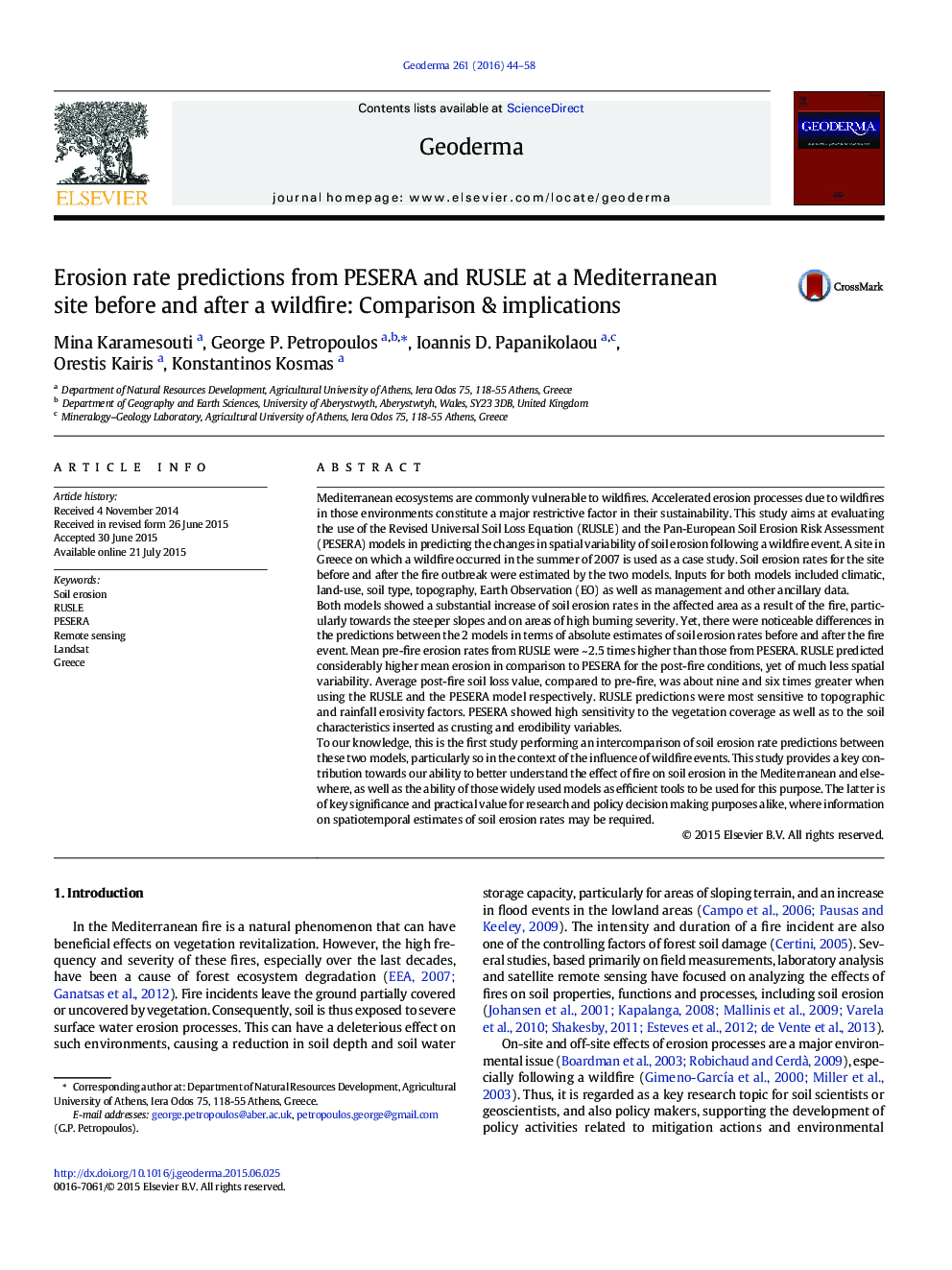| کد مقاله | کد نشریه | سال انتشار | مقاله انگلیسی | نسخه تمام متن |
|---|---|---|---|---|
| 6408397 | 1629455 | 2016 | 15 صفحه PDF | دانلود رایگان |

- Estimate soil erosion in a Mediterranean forest using the RUSLE and the PESERA models, before and after fire
- Comparative analysis of the two soil erosion models in absolute values and spatial variability
- Vegetation and soil characteristics' main impact on the PESERA output
- RUSLE appears to be very sensitive to undulating terrain and the climate.
- Alternative approach is suggested for areas with very high relief and the flat to almost flat areas.
Mediterranean ecosystems are commonly vulnerable to wildfires. Accelerated erosion processes due to wildfires in those environments constitute a major restrictive factor in their sustainability. This study aims at evaluating the use of the Revised Universal Soil Loss Equation (RUSLE) and the Pan-European Soil Erosion Risk Assessment (PESERA) models in predicting the changes in spatial variability of soil erosion following a wildfire event. A site in Greece on which a wildfire occurred in the summer of 2007 is used as a case study. Soil erosion rates for the site before and after the fire outbreak were estimated by the two models. Inputs for both models included climatic, land-use, soil type, topography, Earth Observation (EO) as well as management and other ancillary data.Both models showed a substantial increase of soil erosion rates in the affected area as a result of the fire, particularly towards the steeper slopes and on areas of high burning severity. Yet, there were noticeable differences in the predictions between the 2 models in terms of absolute estimates of soil erosion rates before and after the fire event. Mean pre-fire erosion rates from RUSLE were ~Â 2.5 times higher than those from PESERA. RUSLE predicted considerably higher mean erosion in comparison to PESERA for the post-fire conditions, yet of much less spatial variability. Average post-fire soil loss value, compared to pre-fire, was about nine and six times greater when using the RUSLE and the PESERA model respectively. RUSLE predictions were most sensitive to topographic and rainfall erosivity factors. PESERA showed high sensitivity to the vegetation coverage as well as to the soil characteristics inserted as crusting and erodibility variables.To our knowledge, this is the first study performing an intercomparison of soil erosion rate predictions between these two models, particularly so in the context of the influence of wildfire events. This study provides a key contribution towards our ability to better understand the effect of fire on soil erosion in the Mediterranean and elsewhere, as well as the ability of those widely used models as efficient tools to be used for this purpose. The latter is of key significance and practical value for research and policy decision making purposes alike, where information on spatiotemporal estimates of soil erosion rates may be required.
Journal: Geoderma - Volume 261, 1 January 2016, Pages 44-58